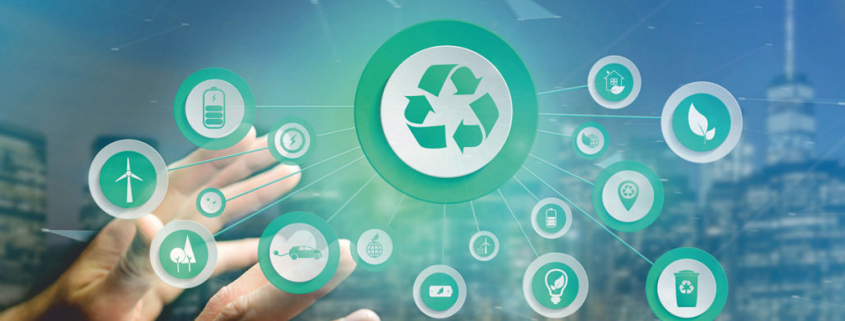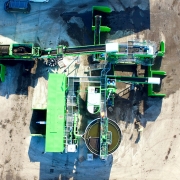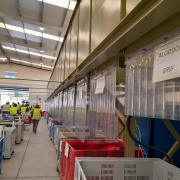Mobile Network Equipment: GSMA Presented Strategy Paper for Circular Economy
The GSM Association (also referred to as ‘the GSMA’ or Global System for Mobile Communications) has published a strategy paper that analyzes how the network equipment used within the telecommunications system could evolve towards a circular business model.
The planet and its people need to reduce resource use and move to more sustainable business models, the industry organization representing the interests of more than 750 mobile network operators worldwide stated in its executive summary. That would also apply to the telecommunications industry and its network equipment. “With rapid technological changes and accompanying customer behaviors, lifecycles are shortened, resulting in greater production and increasing waste. While the industry is already practicing circular economy with mostly separate initiatives, this strategy paper outlines opportunities to create a global and unified vision for the whole ecosystem.” That would encompass operators, suppliers, policymakers and civil society organizations.
In this regard, the authors of the paper have identified four challenges:
- “Reducing waste products, components and critical raw materials: Greater recycling of components and raw materials into remanufacturing processes is essential. Eco design principles as well as proper documentation and regulation to increase reliability are good first steps to lower the impact.
- Optimizing the sourcing, reusing and repurposing of existing network equipment: current market fragmentation has to be reduced to create a global second-hand market on a larger scale. Many barriers still exist, one of them being a lack of cooperation mode for value and revenue for all.
- Harmonizing the methods of evaluation to generate a common understanding: an integrated approach must be agreed upon with unified environmental metrics and recognized benchmark method for universal comparison.
- Redesigning the supply chain around the circular principles: to ensure full support and implementation, a new circular business model with a stronger business case needs to emerge. Contractual, regulatory and design barriers could be re-engineered to become incentives.”
In the paper, the descriptions of these challenges are supplemented by case studies. Some examples concerning challenge one (reducing waste products, components and critical raw materials) outline some reuse and recycling initiatives, the information provided by the respective companies:
- The AT&T Global Supply Chain Investment Recovery (IR) group works with the company’s contracted R2-certified vendors to recover and recycle network infrastructure assets. Materials are dismantled, sorted and baled by commodity in preparation for sale or recycling.
- In 2018-19, BT launched an initiative called R3X, which stands for Reuse, Recycle and Resale. This is a program that depowers and recovers redundant assets across its estate in collaboration with BT suppliers.
- MTN’s circular economy program, named “Project Infinity”, is one of the key drivers of the company’s 2025 strategy and for achieving its net-zero by 2040 target. Since 2018, MTN has run a proof of concept and is currently operationalizing the program.
- OSCAR (Orange Sustainable and Circular Ambition for Recertification) is Orange’s circular economy program, with the ultimate environmental aim to help reach net-zero carbon goals in 2040. By 2025, Orange targets that the majority of IT infrastructure, networks and data centers will operate with refurbished equipment at a large scale.
- During the process of network transformation from copper to optic fiber, a lot of equipment is being reused as spare parts for Telefónica’s fixed network. In addition, Telefónica in Mexico is gradually dismantling an important part of their mobile network using a circular perspective view. Decommissioned network equipment is reused internally within their own operations inside Mexico or across Telefónica operations in other countries.
- All networks decommissioned by Telia are either reused internally or resold for reuse or recycling externally. Telia’s network equipment re-use/resell program helps reduce both waste and costs, and also generates revenue.
- To support Vodafone’s goal to reuse, resell or recycle 100 percent of their network waste, Vodafone Group launched Asset Marketplace, a business-to-business solution within Vodafone that allows the business to re-sell and repurpose large decommissioned electrical items like masts and antennae, helping to reduce carbon emissions and resource use by not needing to purchase new items. Since launching at the start of 2020, the company estimates that this has allowed for financial savings of more than 10 million Euro.
As underlined by GSMA, the strategy paper is intended to be the start of a discussion about the recommendations across the industry. “The next steps will be to agree a way forward and a timeline, and identifying how we can progress towards greater circularity.”
(Published in GLOBAL RECYCLING Magazine 2/2022, Page 31, Photo: Production Perig / stock.adobe.com)







